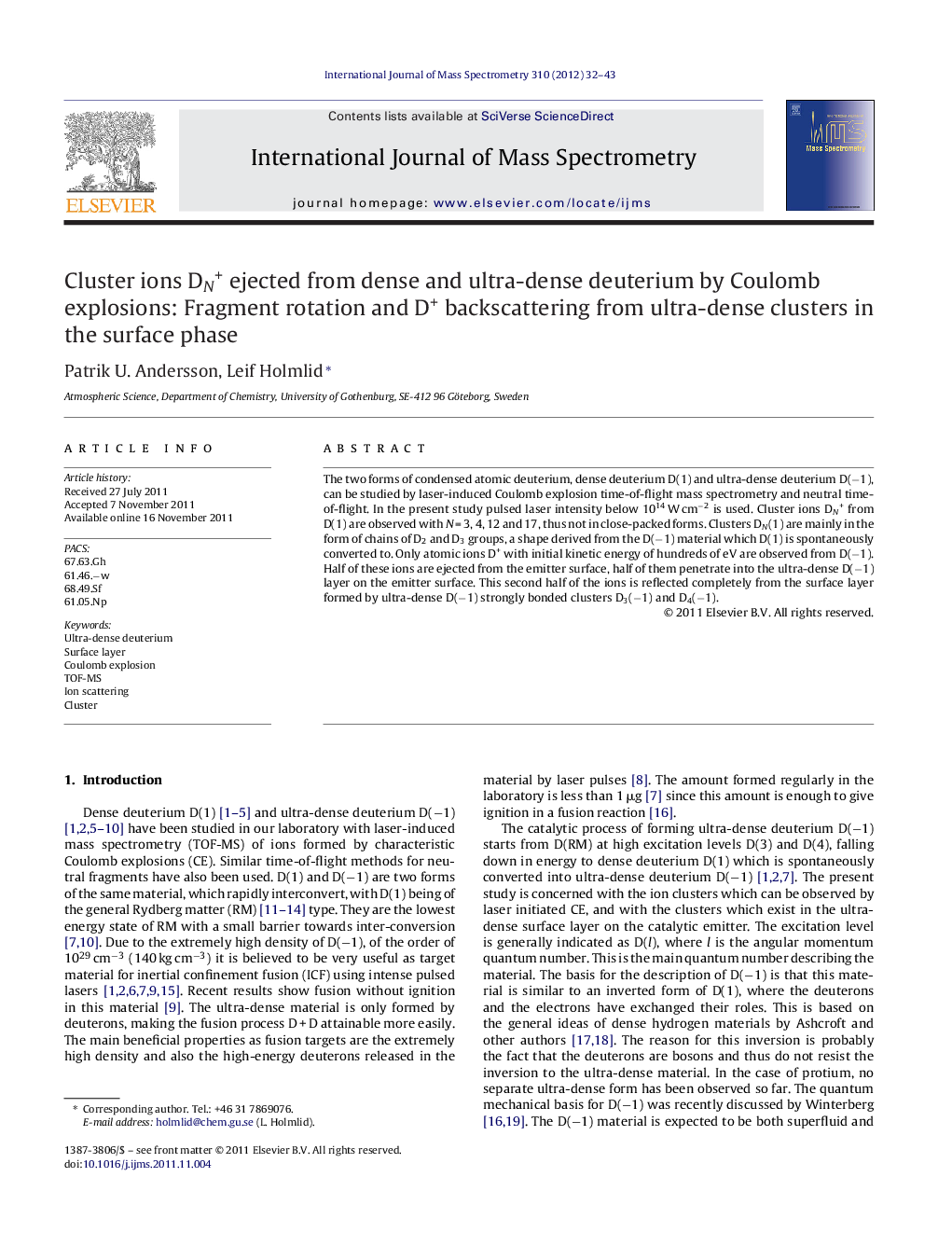| Article ID | Journal | Published Year | Pages | File Type |
|---|---|---|---|---|
| 1192848 | International Journal of Mass Spectrometry | 2012 | 12 Pages |
The two forms of condensed atomic deuterium, dense deuterium D(1) and ultra-dense deuterium D(−1), can be studied by laser-induced Coulomb explosion time-of-flight mass spectrometry and neutral time-of-flight. In the present study pulsed laser intensity below 1014 W cm−2 is used. Cluster ions DN+ from D(1) are observed with N = 3, 4, 12 and 17, thus not in close-packed forms. Clusters DN(1) are mainly in the form of chains of D2 and D3 groups, a shape derived from the D(−1) material which D(1) is spontaneously converted to. Only atomic ions D+ with initial kinetic energy of hundreds of eV are observed from D(−1). Half of these ions are ejected from the emitter surface, half of them penetrate into the ultra-dense D(−1) layer on the emitter surface. This second half of the ions is reflected completely from the surface layer formed by ultra-dense D(−1) strongly bonded clusters D3(−1) and D4(−1).
Graphical abstractFigure optionsDownload full-size imageDownload high-quality image (78 K)Download as PowerPoint slideHighlights► Cluster ions DN+ from D(1) are observed with N = 3, 4, 12 and 17, not in close-packed forms. ► Clusters DN(1) from D(1) are mainly in the form of chains of D2 and D3 groups. ► Only atomic ions D+ with initial kinetic energy of hundreds of eV are observed from D(−1). ► Half of the D+ ions are ejected from the emitter surface, half of them penetrate into the ultra-dense D(−1) layer on the emitter surface. This second half of the ions is reflected completely from the surface layer formed by clusters D3(−1) and D4(−1).
